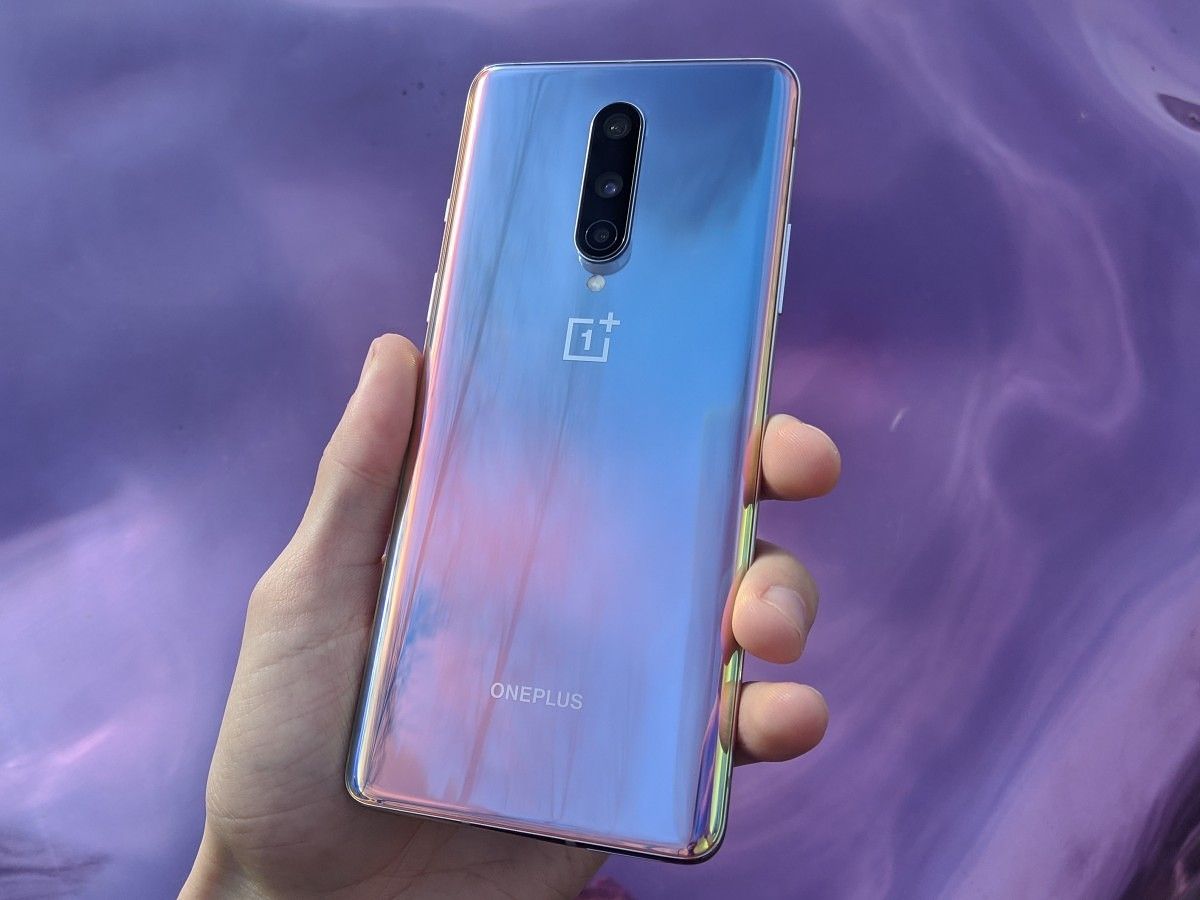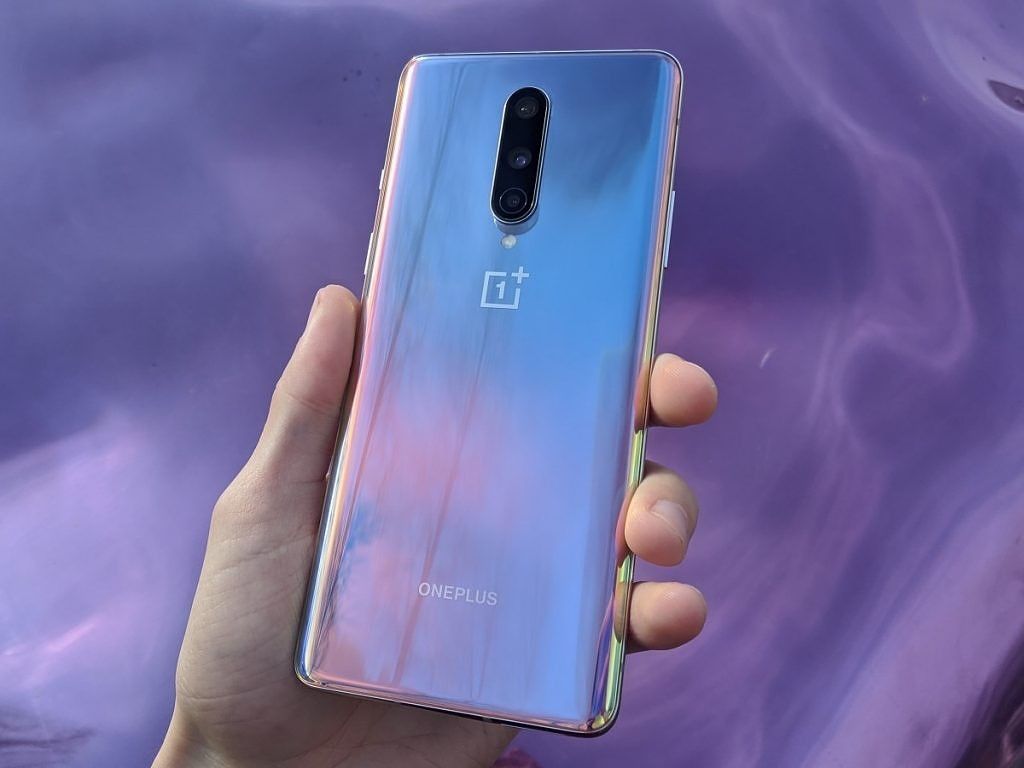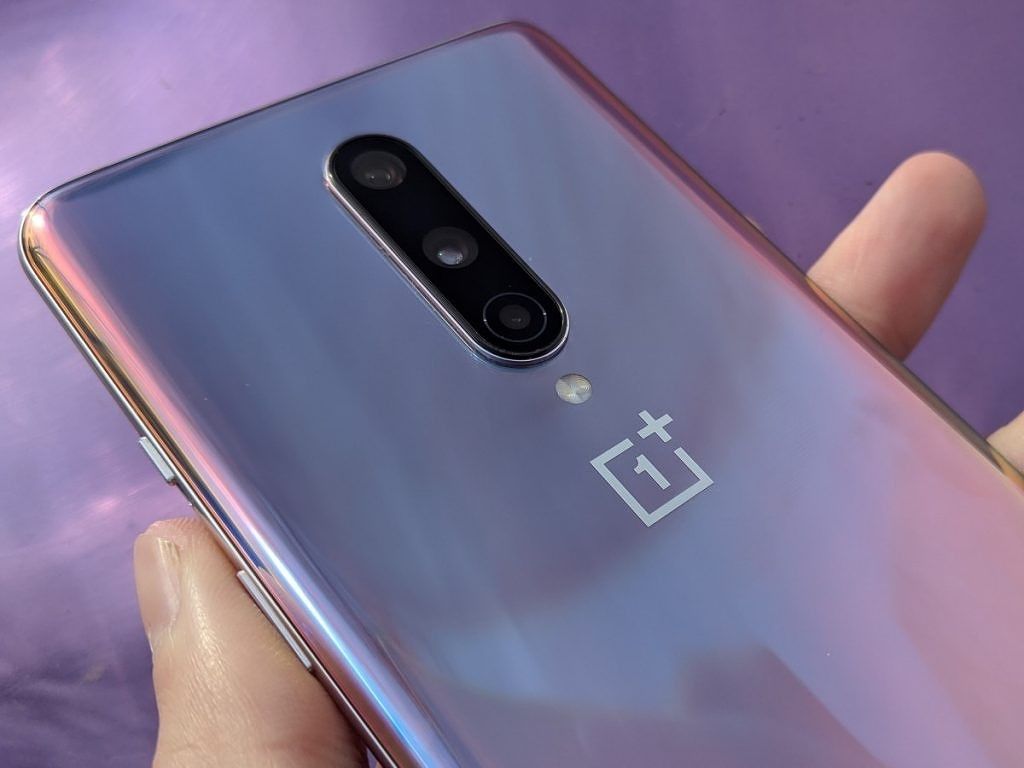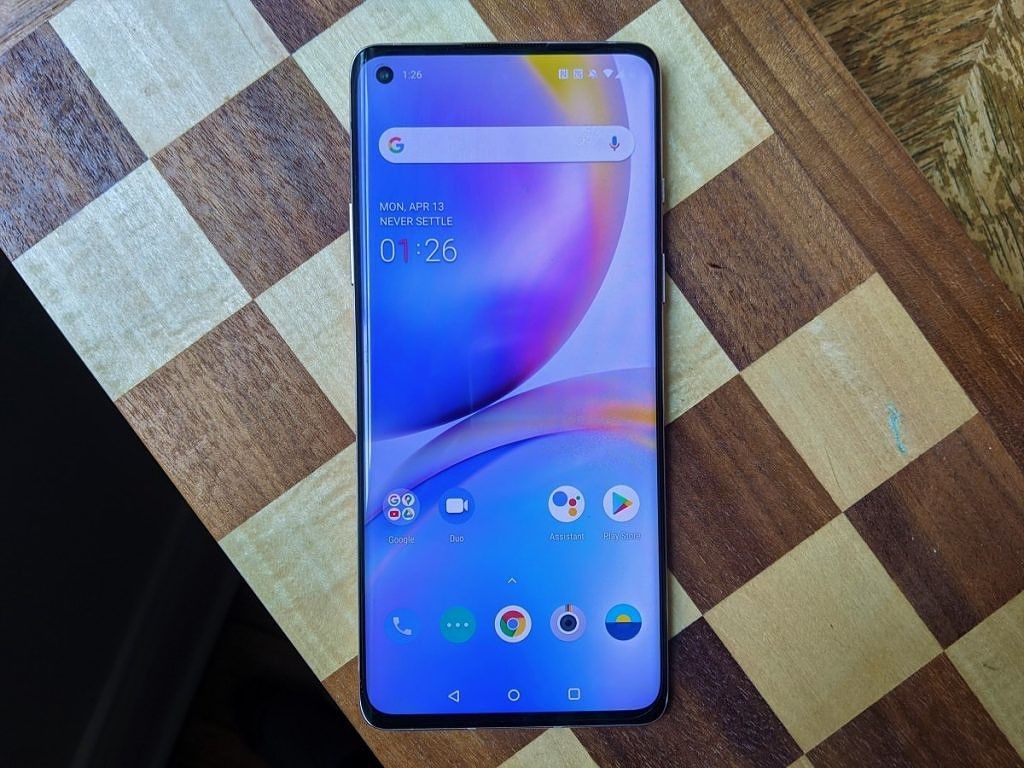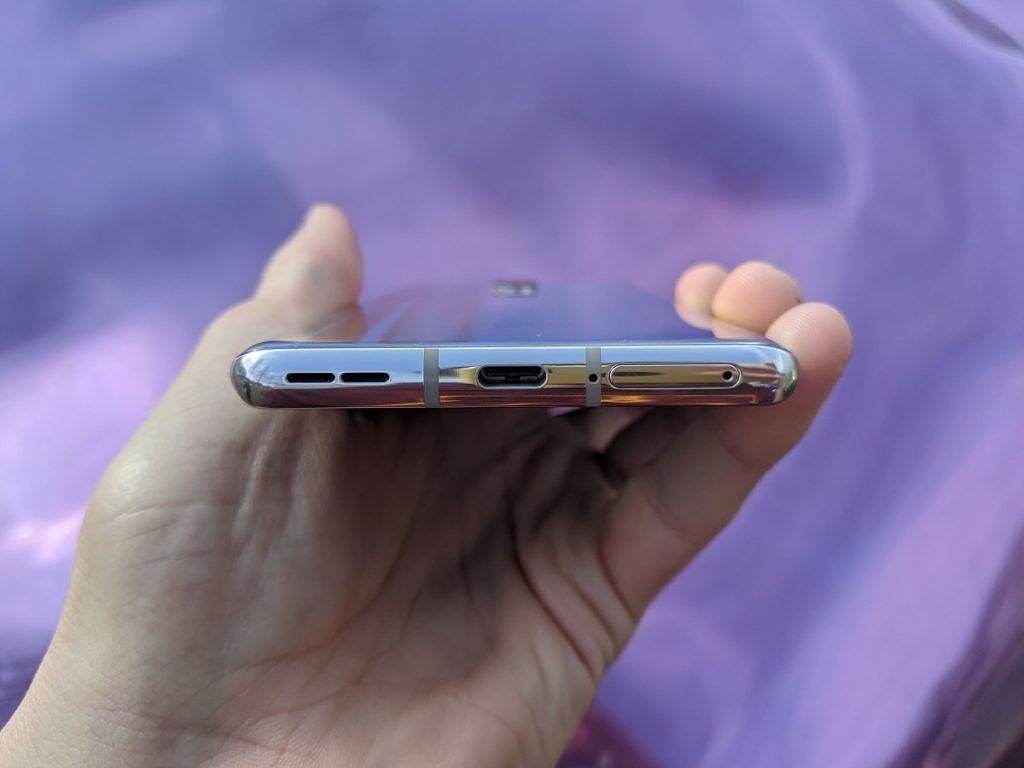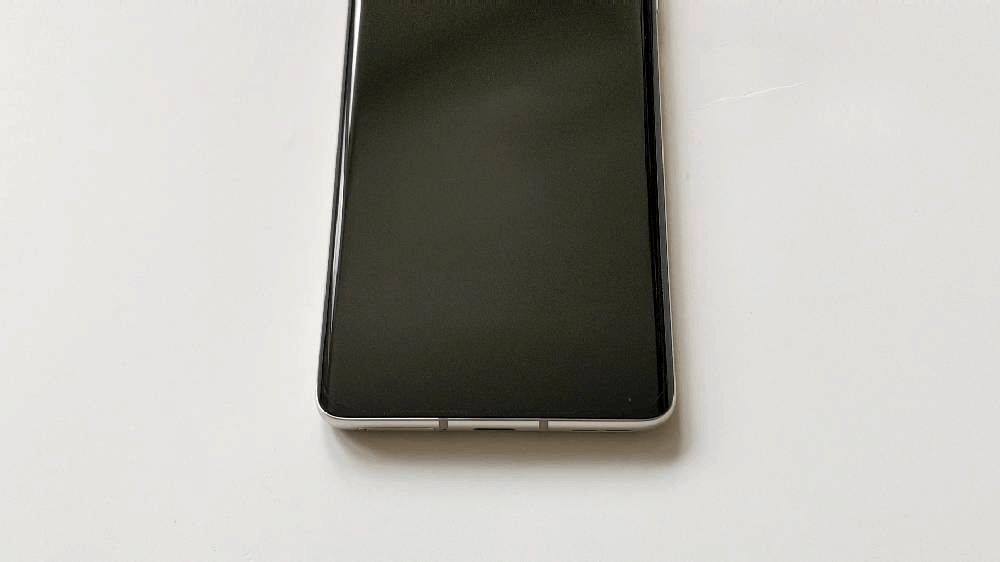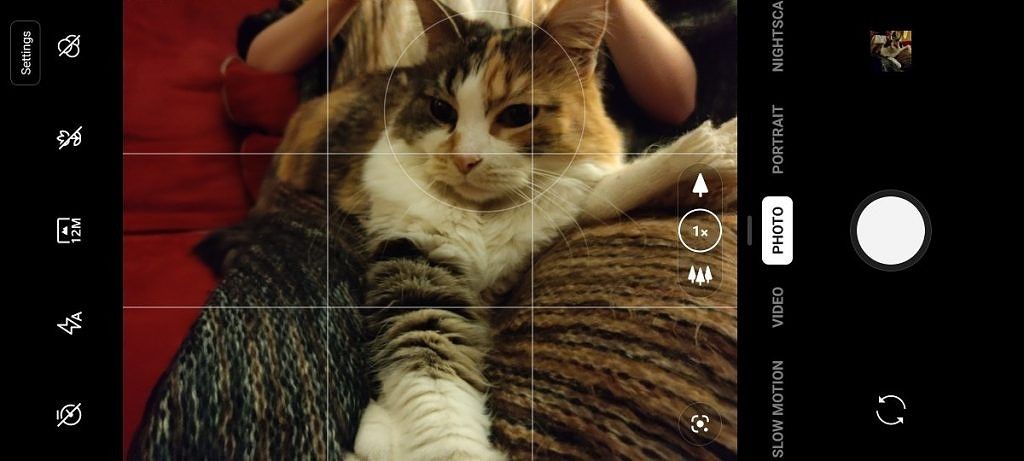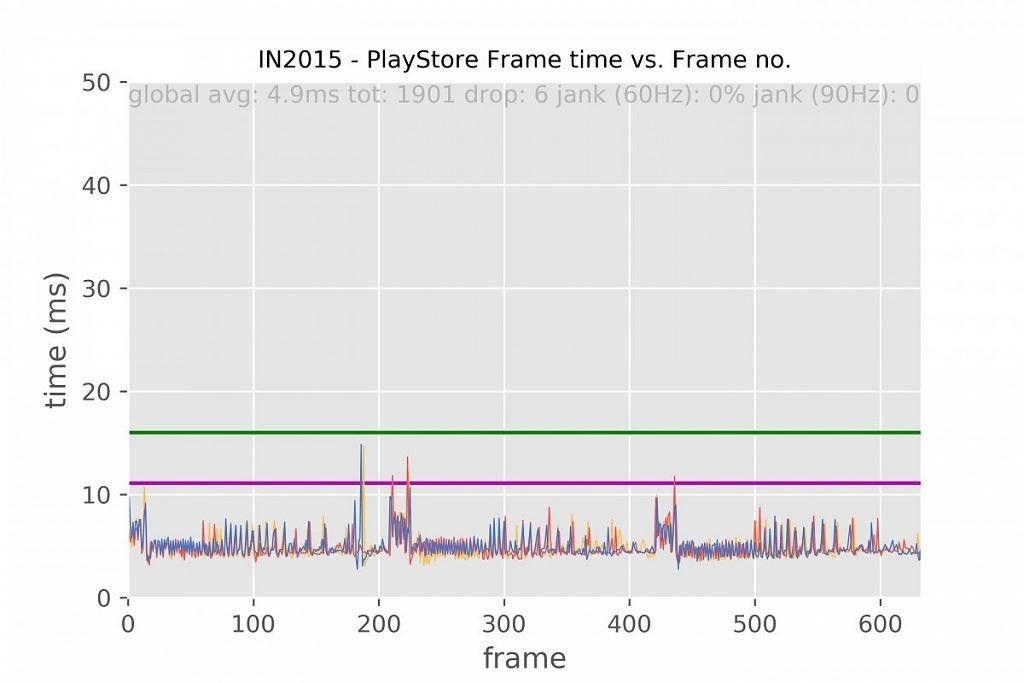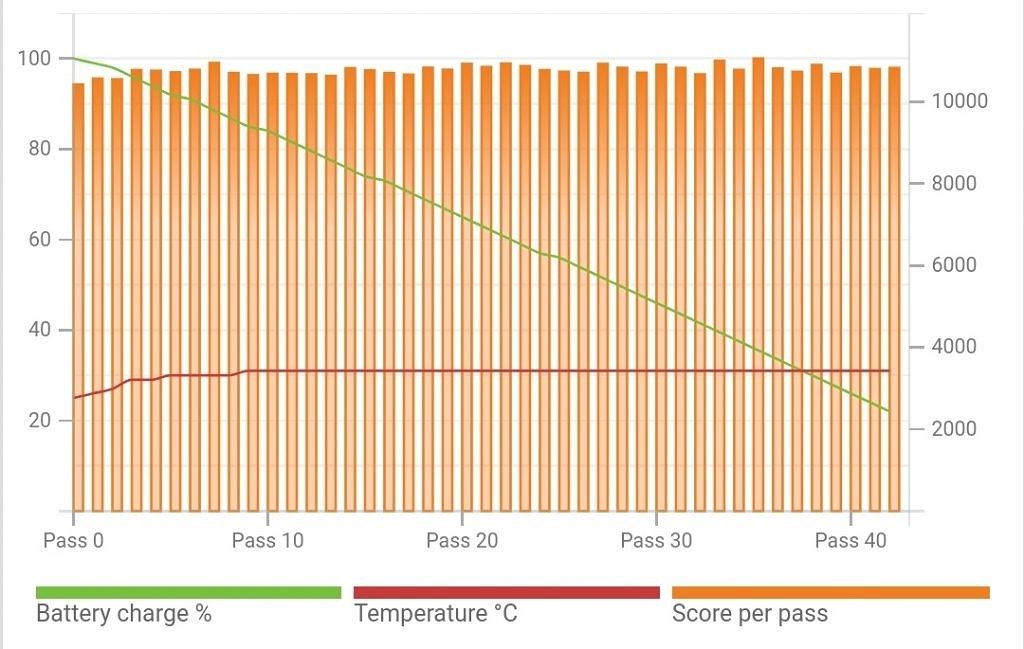The OnePlus 7T was released alongside the OnePlus 7T Pro flagship in late 2019 as the half-yearly upgrade to the OnePlus 7, but a fairly big upgrade for the markets that were stuck with the OnePlus 6T. In my eyes, the OnePlus 7T was a classic: a practical smartphone in the premium category that cuts out the gimmicks for a tight and cohesive product experience. Several other team members here at XDA also echoed the same thoughts, judging it as one of the best value flagships of 2019. And now comes the OnePlus 8, promising to pick up where the 7T left off and run across the last mile.
But with a $699 price tag for the base variant, which is a good $100 increase from the OnePlus 7T's starting price, can the OnePlus 8 truly succeed the OnePlus 7T? Does it offer enough reasons for someone to pick this phone over the 7T, or even better, upgrade from the OnePlus 7T? Do all the hardware specification jumps translate into a noticeable improvement in the value flagship experience? Come along as we attempt to answer these questions in our OnePlus 8 review.
OnePlus 8 Series Specifications
Design: The Color out of Space
The OnePlus 8 brings very few changes to the general OnePlus back design that we’ve become accustomed to over the past several years. It features the familiar gently-curved glass back with the vertical multi-camera housing centered at the top of the device, this time featuring three camera lenses, in contrast to its direct predecessor’s double camera array. If it wasn’t for the new color and extra camera, you’d be hard-pressed to pinpoint the year-on-year changes to this back design, but that’s not a bad thing at all. It is a bit shorter (160.2mm), narrower (72.9mm) and even thinner (8mm) than the OnePlus 7T but remains comfortable to hold and fits perfectly in my medium-sized hand, allowing me to grip the device tightly and securely. Unlike other glass sandwich smartphones, there are no sharp edges or corners where the glass meets the aluminum rail. All of this is to be expected as, again, the company has had time to master this particular form through multiple iterations. What the OnePlus 8 brings to the table that’s new and exciting, in typical OnePlus fashion, are the color options.
There is no shortage of dazzling color options on the market, as companies try to constantly one-up each other with alluring (and often blue) glass backs that shine in all sorts of patterns. OnePlus, in particular, is known for its staggered releases of multiple color options, each more enticing than the last, a move that had become a predictable part of each of their phones’ launch cycles. This new offering comes in three colors, Onyx Black, Glacial Green, and the Interstellar Glow variant which we are reviewing. Amidst so many great looking phones, how does this unit fare?
The Interstellar Glow OnePlus 8 is being propped as the standard-bearer for this launch, and for good reason. It has a often-colorless and completely iridescent glass back that’s super glossy and reflective, and thus very shiny. Not unlike every glass smartphone of the day, it can recast light in all sorts of patterns, but this particular approach makes the entire back change with the slightest flick of your wrist.
It essentially looks as if the back of the phone is part soapy water bubble and part polished pearl, smoothly alternating between hues of pink, blue and purple without committing to any particular color
It essentially looks as if the back of the phone is part soapy water bubble and part polished pearl, smoothly alternating between hues of pink, blue and purple without committing to any particular color. If you look closely, you’ll even find other colors mixed in there too, making for a rainbowy treat that’s honestly somewhat addictive to look at.
That is, of course, until the phone picks up all your fingerprints and becomes a smudgy mess. This is a problem here just as much as with every phone, and the OnePlus 8 didn’t come with the excellently-fitting plastic cases that just about every recent OnePlus device packs in the box, which is a huge bummer. This is also a very fragile-looking phone: part of it is that it looks so expensive and glossy, but I’ve also had very mixed experiences with recent OnePlus devices. I bought a OnePlus 7 Pro that endured every kind of fall that a careful smartphone owner could imagine and that I was nonetheless able to resell as “mint condition”. The OnePlus 7T that I received for review last year, however, cracked after a one feet fall on floating wood, despite being encased! So omitting the signature transparent case is a shame, given the pretty back and possible fragility of the device.
The front of the device is where we see the most change this time around. Somewhat similarly to the OnePlus 7 Pro, this device opts for a slightly-curved display that helps mask modestly-chunky bezels. I say “somewhat” because this time, the curving begins much closer to the edges of the device and is rather steep, so it’s not as visually-noticeable in everyday use as it was on the OnePlus 7 Pro, or as it is on other curved smartphones. This is a good thing for those who enjoy flatter displays, like that of the 7T, but it’s still something you can feel when swiping from the sides, and I've had many accidental touches. At the very least, this panel does not suffer from the slight but annoying perspective distortion that the 7 Pro’s odd curvature choice caused during media consumption, nor the obstructive glare that sometimes interfered with content visibility.
Gone is also the notched display of the OnePlus 7 and 7T, as the company opted for a hole-punch like many other manufacturers. The top-left hole-punch is fairly small as it’s housing a single camera, and while it becomes mostly unnoticeable during everyday use, it’s still more noticeable than the OnePlus teardrop notch ever was in my opinion. It also doesn’t help that the curved screen doesn’t allow it to be placed in alignment with the screen’s curved corners, as it’s pushed closer to the middle of the panel. With both the curved screen and the move-away from a tear-drop notch, this phone ends up looking much less like a OnePlus phone and more like a Samsung, or just another Android phone.
A change of identity like this isn’t necessarily a bad thing, but I find this approach much worse than both the pop-up camera full-screen goodness of the OnePlus 7 Pro and the minimal teardrop notch of the flatter 7T. Besides that, the front houses a top speaker (that aids in stereo audio) and an under-display fingerprint scanner, which we’ll touch on later.
Around the phone, we have a standard aluminum frame that’s extremely polished to complement the pearly and bubbly back of the phone. It’s fairly pretty, but I’m somewhat skeptical about how well it’ll hold up in a year given how smooth and polished it is -- these railings typically accumulate tons of scratches and scuffs in no time without a case. The bottom of the phone hosts the dual SIM slot, microphone, USB Type-C port and bottom-firing speaker, while the left and right sides host the volume keys and power button respectively. The familiar alert slider returns with the same tactile pattern.
These are probably the best-feeling buttons I’ve tried on a smartphone
One last observation here is that this specific review unit has had the absolute best-feeling buttons I’ve tried: they are clicky, and they have no give or wiggle at all when resting the finger on top of them, or trying to wiggle them in place without clicking. I’m extremely picky with buttons, and these get an A+ for me, though this doesn’t guarantee that every unit will have such great-feeling buttons.
The back design is ultimately the showstopper here. While the phone feels incredibly well-built, fairly light (much lighter than the 7 Pro, for one) and super thin, the Interstellar Glow back is probably the variant most people will want to go for, and with good reason. While it’s not the “first” iridescent smartphone out there, it’s the nicest of its kind in my opinion, and one of the best color options in OnePlus’ extensive repertoire. And that's kind of a tragedy, too, considering that the base variant does not come in Interstellar Glow; this means you'll have to fork out $800 for the privilege, making this pretty color far too expensive when the company's own 7T also offers a nice design and similar hardware.
User Interface: Good old, same old
There’s really not much that has changed when it comes to OnePlus’ excellent interface. OxygenOS has been a favorite among Android enthusiasts given that, for the most part, it has not strayed too far from the simple and functional design language of Stock Android. Over the years, this has increasingly changed as the company adopted custom icons and its own OnePlus Slate font, among other design changes. But all of this still leaves OxygenOS closer to a Pixel smartphone in terms of its UI than just about any other big name brand out there.
Better yet, OxygenOS offers tons of customization options, enabling you to change the theme, icon shapes and accent colors of the OS to better match your mood and taste. You can also tweak the fingerprint unlock animation, the ambient display clock style, and the “Horizon Light” -- their way of showcasing notifications without a notification LED, using the phone’s curved screen edges. While OnePlus was once at the forefront of UI customization, though, most smartphones today have many of these features -- even Google’s more restrained Pixel smartphones offer a modest amount of UI customization like accent color tuning.
The UI largely remains identical, barring some slight animation changes when unlocking the phone or accessing the volume settings. One new UI addition is that of "dynamic" wallpapers. Now it must be said that OnePlus has always delivered incredible wallpapers, going back to the OnePlus 2 when their collaboration with artist Hampus Olsson first began. More recent smartphones like the OnePlus 7 Pro and 7T have had live wallpapers with smooth animations upon unlocking the phone and swiping around the homescreen, which complemented the high refresh rate panels really nicely. OnePlus is taking these a step further with dynamic wallpapers, which subtly shift color tones based on local temperature and weather.
The dynamic wallpapers and fingerprint unlock animation are as satisfying as ever
To be honest, the change is noticeable but not very impressive. The wallpaper themselves are very nice, though now a tad too reminiscent of what’s been featured on competing phones, and thus feel a bit less original than what’s found on previous OnePlus devices. But they are still very pretty, and although a wallpaper is hardly a smartphone selling point, it’s still yet another polished detail to go along with the rest.
What is more of a selling point is their new Dark Theme 2.0, a more-universal dark mode that is custom-made for the OnePlus 8 and 8 Pro, being built from the ground up to support more applications. It’s not surprising that OnePlus would expand upon such an enthusiast-centric feature, and they were one of the first companies to introduce this functionality, all the way back with the OnePlus 2. With Dark Theme 2.0, system apps will become dark-themed as usual, and then other applications with available night or dark modes like the Play Store will be themed as well. Then, by going into the OnePlus laboratory, you’ll be able to enable Dark Tone, which will also theme applications that don’t have a built-in dark theme, like Hangouts. This works super well, though app support is limited, and the theming itself just doesn’t look as polished as an app developer’s own vision for their app’s dark mode (this is particularly evident in apps like Hangouts where the theming sometimes interferes with text legibility).
There are other small changes throughout OxygenOS, like the default launcher replacing the dull OnePlus Shelf with a typical Google feed. Of course, OnePlus also needs to accommodate for the new hole-punch, and the notification bar is pushed slightly to the right starting with the clock, which might bother some people. You can “turn off” the hole-punch similarly to how you could mask the notch on previous devices, but the implementation here simply fills the top of the device with an extremely uneven virtual bezel that frankly looks gross. I can’t see anyone using that feature, ever.
Beyond these changes, the OnePlus 8 feels like any up-to-date OnePlus device, so those looking to upgrade would have a very seamless transition. If you don’t have a OnePlus device, but love a simple and performant UI that never gets in the way with aesthetic clutter or shoddy organization, then you’ll probably like OxygenOS a lot. It’s hard to overstate how polished it looks and feels after so many iterative refinements and sensible artistic decisions.
User Experience & Software Features: Nothing new to see
In terms of features, this OxygenOS revision doesn’t bring that much to the table. It’s got all the great functionality OnePlus users have come to love, but other than the better Dark Mode and dynamic wallpapers mentioned above, not much else is new. This isn’t terrible nor unexpected, as OnePlus mostly adds new functionality through software updates, with only the bigger features becoming headliners launched alongside new smartphones.
For example, the dual-channel network acceleration featured in recent OxygenOS betas is now present in this release, allowing you to use both WiFi and data to speed up big downloads. Like on Pixel smartphones, you’ll also be able to access Google’s live captioning from the volume side menu, which will transcribe whatever audio is playing on your device. This is the kind of stuff that OxygenOS users can expect in the near future; getting new features and small improvements or optimizations constantly is one of my favorite parts of the OnePlus experience, so while this release feels fairly light on new features, users can expect more functionality (including most of what the inevitable ‘T’ late-year release will bring) in the near future.
So, what features are there (and have been there) that you should know about?
For starters, OnePlus has been offering its own robust set of lockscreen gestures for years, which lets you draw certain shapes when the screen is off and map those actions to apps or specific shortcuts. Another great OxygenOS feature that I've become accustomed to is the ability to take screenshots with a three-finger swipe down the screen. Perhaps the one feature I use every day is the ability to record the screen through a handy overlay that’s accessible via the quick setting toggles. The screen recorder offers a variety of resolution options, and it can quickly be started, paused, and canceled. Then, if the recording wasn’t of your liking, you can immediately delete the video from the notification popup meant to inform you that the video has been saved successfully.
OxygenOS is filled with small, useful features
As for unlocking, we still have access to face unlock which remains one of the quickest (albeit not necessarily safest) solutions on the market. The under-display fingerprint scanner of the OnePlus 8 has been fairly quick and extremely accurate for me, with a smaller activation area and less-annoying light than that of the 7T. One of my favorite OxygenOS features is tied to fingerprint unlocking as well: after unlocking the device, you can keep holding the screen to bring up a customizable menu of app shortcuts. By continuing to hold the finger, you can scroll across the horizontal list, and releasing the finger launches the application. This is an excellent feature if, for example, you typically unlock your phone to look at a social media feed. Given you can initiate the gesture within your pocket, you are effectively able to have the specific app ready by the time you draw out your phone.
OxygenOS is littered with small, useful features like that. For example, they offer one of the best screenshot editors out there, allowing you to quickly crop, rotate and even blur portions of the screenshot. They were also one of the first ones to include expanded screenshots, which often come in handy. They also have a simple video editor that lets you quickly trim clips, add filters, and also add music from a small (and admittedly awful) selection of tunes.
Speaking of gaming, the company offers fleshed-out gaming-enhancement service with its own app. “Game Space” acts as a hub for all of your games, not unlike the gaming center apps other manufacturers also offer. You can quickly launch your games by swiping cross their respective cards in a horizontal list, or a more traditional app icon approach. With Game Space, you can make it so that whenever you receive notifications while in a game, you only get a discreet text pop-up reminiscent of the old notification tickers -- I can't overstate you how useful this is when playing multiplayer games.
You can also turn call notifications from third-party apps into text pop-ups, make it so that calls are automatically answered via the speaker, and turn off auto-brightness for your games (you are better off just turning off auto-brightness in general). Other options include haptic feedback enhancement, automatic network switching to avoid lag, and graphics optimization in the form of improved shadow details. Then there is Fnatic mode, which (1) blocks all notifications and calls (2) restricts background processes to maximize CPU and GPU allocation, and (3) stops the secondary SIM. Whenever you are inside a game, a persistent notification will allow you to access Game Space settings or turn on Fnatic mode directly with a button shortcut.
The opposite of Fnatic would be OnePlus’ Zen Mode. On top of offering Android’s typical Digital Well-being features, the OnePlus 8 offers Zen Mode to voluntarily lock yourself out of your phone, and focus on other things, for 20, 30, 40 and 60-minute sessions. I personally have no need for Zen Mode, though those who do enjoy the feature can also keep track of their total time in this mode, how many notifications were muted, and how many days it’s been used. You can also save these stats as screenshots, or share them directly from the app to let everyone know how much you are not using your new phone.
Beyond these note-worthy features, OxygenOS offers a plethora of extra functionality. By now, you probably already know about the alert slider that’s characteristic of every OnePlus device since the OnePlus 2, which of course is retained and needs no explanation. It remains one of my favorite perks of the device, though, as it’s something I use multiple times a day, every day. By contrast, there are also features I personally hardly ever use, yet might come in handy to some of you. Parallel apps let you essentially log in with two different accounts on the same app, in supported services like Discord or FB Messenger; the App Locker lets you make it so that certain apps require authentication, and also lets you hide their notification content. Quick Reply in landscape lets you reply to an incoming notification by essentially opening a smaller version of the app to the side.
You get the idea. While I haven’t included features related to the display, camera, and battery life or charging in this section, this list makes it clear that the OnePlus 8 brings a ton of functionality.
Display: Still good, but not better
OnePlus smartphones have offered some tremendous screens in the past, often opting for the latest in screen technology and having been one of the first to hop onto the high refresh rate train. XDA’s Dylan Raga has done in-depth display analyses for many OnePlus smartphones, and while he typically finds room for improvement, their displays have generally been excellent. Last year’s OnePlus 7 Pro, for example, earned an illustrious A grade thanks to its great color accuracy and minimal black clipping.
While it retains the 90Hz goodness introduced last year, the OnePlus 8 changes things up a bit by opting for a newer 6.55-inch (20:9) Samsung AMOLED panel, and foregoing the pop-up camera for a hole-punch solution. It's the kind of bleeding-edge panel you'd expect out of a 2020 flagship, with HDR10+ support and the added benefit of TÜV Eye Comfort Certification due to its ability to "drastically reduce the harmful effects of blue light". While I am not a display expert like Dylan is, I can give you my subjective review of the OnePlus 8’s display. If you are looking for a more comprehensive display review, you’ll have to check out Dylan’s OnePlus 8 Pro display analysis. For thoughts on the refresh rate side of things, head over to the dedicated performance article.
Auto-brightness is still really terrible, despite constant user complaints
Starting with brightness, it’s not surprising that the OnePlus 8 gets bright, with an output that edges out the OnePlus 7T’s at the manually adjusted maximum brightness. Not only does it offer higher peak brightness, which is something you typically expect out of newer displays anyway, but the lowest brightness is also seemingly lower, with side-by-side tests showing the OnePlus 8 to be much more comfortable for late-night browsing or YouTube binge-watching. This works well in tandem with the previously-discussed advanced Dark Mode, as more of your apps will be themed to take advantage of the rich blacks enabled by AMOLED displays.
The difference between the maximum manual brightness and the auto-brightness' boosted mode is significant, meaning you'll likely have to turn on auto-brightness even if you don't want to.
Sadly, OnePlus continues to have a less-than-stellar adaptive brightness implementation, which is frustrating given the limited range of levels available when manually adjusting the brightness. It has been many years since I’ve basically have had to turn adaptive brightness off, entirely, on OnePlus devices -- I’ve mostly just used the slider since at least since the OnePlus 6. It's one of the worst parts of owning a OnePlus smartphone, especially considering that more affordable phones have this figured out and that some flagship competitors like Samsung feature solutions that I have gladly left on for the entirety of my run with the phone. It is slow to adjust and it often misses the mark, getting too low for casual indoor usage, and it often gets in the way of the camera experience (more on this later). It’s nice that the phone can boast a better brightness range that’s both wider and more granular, but much of the benefit afforded by new hardware is wasted by the still-insufficient auto-brightness.
One of the advantages mentioned earlier about the OnePlus 7 Pro’s display was no excessive black clipping. Compared to the OnePlus 7T, at least, this phone seems a bit worse in this regard. Black saturation, tone response, and general visibility have seemingly regressed at lower brightness levels (under 55%), with side-by-side controlled tests making it much harder to delineate between different super-dark grey tones (compared to the 7T). On the OnePlus 7T, I often found myself turning up the screen brightness simply to increase contrast so that I can read or watch content, and I've had the same problem on the OnePlus 8. My unit doesn’t have any strange or obvious banding in color and grayscale gradients, however.
The OnePlus 8 still packs a great display for media consumption
While I can’t really comment on color accuracy, I would say that the OnePlus 8 display looks to be a hair more saturated than that of the OnePlus 7T on the Vivid profile, to the point where the brighter hues of each color appear more tightly clustered and are harder to discern. I haven’t found this to make much of a difference in the positive or the negative when consuming video content -- which, by the way, is a lot of fun on the OnePlus 8. The color temperature and white point are just right for my taste, too. As said earlier, the screen is bright, and on the Vivid color profile, the colors are punchy but not cartoony.
Speaking of color profiles, you’ll still be able to choose from the aforementioned Vivid, which has punchy colors and higher contrast, or Natural which targets the sRGB color space for industry-standard color accuracy. You can also manually tweak the color temperature after selecting the Display P3, AMOLED Wide Color or sRGB profiles under advanced display settings.
What about display-related features? Night mode is there, and it can be conveniently scheduled, though it still suffers the same issues as before. Particularly, whenever you unlock the phone, it slowly transitions into night mode, meaning you’ll be blasted by blue light for a second or so each time. This and the iffy auto-brightness were a match made in hell whenever I had to attend to late-night notifications. There is a video enhancer that will sharpen up video and turn up the colors, but I personally found this feature fairly worthless. Comfort Tone (OxygenOS’s version of Apple’s True Tone) is missing from the OnePlus 8, as the phone has done away with the RGB ALS that enabled matching the screen’s calibration against the current outdoor light settings. Reading Mode lets you turn the screen either monochrome or sepia, while enhancing contrast and optionally blocking heads-up notifications.
Camera: A higher price but little to show for it
Smartphone photography remains one of the key ways through which OEMs get consumers to periodically upgrade their devices, and it’s becoming harder and harder to recommend phones that don’t offer a great camera experience. This has typically been one of OnePlus’ shortcomings, as their phones could never quite stack up against the pricier competitors. For a while, one could justify this by pointing to the price, but as OnePlus’ prices have only crept up throughout the years, it’s no longer an excuse. The OnePlus 7 Pro and 7T featured fairly mediocre cameras, so much so that I started proactively making sure that I bring a better smartphone camera to important events, and I would often find myself looking for another smartphone in my house when taking pictures indoors. While at first, I wasn’t really unimpressed by the camera, I eventually grew more and more frustrated as the number of ruined shots kept piling up. You can absolutely take great pictures with the OnePlus 7 Pro and 7T, but you can’t do so as effortlessly and consistently as you can with other phones.
The OnePlus 8 and 8 Pro both bring camera changes, with the 8 Pro’s upgrades being substantial. The OnePlus 8’s primary rear camera packs the same 48MP Sony IMX586 sensor as the OnePlus 7T, with EIS & OIS, an aperture of f/1.7 and a pixel size of 0.8μm, and you’ll mostly be shooting in a binned 12MP mode that improves overall light-gathering image quality. The wide-angle camera retains the 16-megapixel count from the 7T, keeps the same f/2.2 aperture, and lowers the field of view to 116 degrees. The dedicated telephoto camera is gone this time around, which is honestly fine by me -- it just wasn’t compelling enough to use on a regular basis, as it wouldn’t really add much detail, and the camera still offers 2x in-sensor zoom. In its place, we now have a 2MP macro camera with a pixel size of 1.75μm, no OIS and f/2.4 aperture.
As for the camera UI, it’s largely similar to that of the 7T barring some small aesthetic changes, and the disappearance of various quick toggles. I actually think that the camera UI has overall regressed compared to what’s found on the OnePlus 7T, as one now needs to access the camera settings activity to change important settings like video resolution for both regular video and slow-motion. And what’s worse, the camera settings are not accessible unless one first unlocks the device, meaning you won’t be able to choose video FPS and resolution when you access the camera through the power-button shortcut. Given that I make great use of that shortcut and that most video I take is spontaneous (and that’s generally the case with slow-motion video, too), this decision just doesn’t make much sense to me. But beyond that nitpicking, it’s a very serviceable camera UI -- it’s very boomer-friendly, and the shortcuts that remain are extremely useful.
What about the pictures themselves? I was expecting to encounter the same issues I had with the 7T’s camera, but overall the pictures did turn out to be a bit better. (Excuse the limited range of subjects, quarantine makes camera reviews a bit difficult). Colors are mostly great, barring a tendency to blow up the reds. There is plenty of contrast, and I don’t think that the pictures are oversharpened, but there’s still a bit of an oil-painting effect when zooming in as usual, and some haloing around various edges. When taking pictures of objects up-close, the narrow focus can be quite noticeable and distracting, and some of the processing issues become apparent. Take a look at that picture of my mate drink, for instance: the top-right edge inside the cup is extremely sharp, where in reality there was a lot of smooth and bubbly detail that the camera obliterated. I’ve had the same happen multiple times with the 7T, as it tended to overprocess contours in uncanny ways.
I found indoors and low-light shots to be slightly better, and color to be a tad nicer, but for the most part, the rear camera's shots on Auto mode turn out nearly identical to those on the 7T. I didn't find the 48MP mode to be of any use; pictures are larger, but there's no discernible detail advantage, and in some cases, images turned out noisier. OnePlus’ Nightscape mode is pretty good too, and there’s a setting to further boost the exposure time if one is specifically using a camera tripod. I also really appreciate that the company introduced a “Pet Mode” -- they enabled face tracking for cats and dogs, and properly adjust the camera shutter speed for our furry friends. I think it’s made a difference when photographing my twitchy cat, who had made the 7T’s job notoriously difficult. I don't think the macro mode is any more useful than it was on the 7T, and despite the dedicated camera, most of my images turned out fairly grainy and, of course, low-resolution.
One area where the phone has changed a lot is portrait shots. While the camera does a fine job at object segmentation, the color of these portrait mode pictures is far too saturated, and completely different than my 7T shots. In the shots above, for example, it reddens my face, highlighting blemishes unlike the other phones. The sky is also completely messed up. The rest of the image is fine, though -- detail and dynamic range are great, and after some quick editing to turn down the saturation, the picture is more than ready for social media. That said, I used to feel that OnePlus portrait shots looked a bit flat (just look at that first comparison), but I'm not sure I really like how drastically they've altered their color science here.
[video width="1280" height="720" mp4="https://static1.xdaimages.com/wordpress/wp-content/uploads/2020/04/New-video.mp4"]
Going back to color, while I’ve managed to get some really nice shots out of this phone (despite COVID-19 health advisories making a camera review fairly difficult), it must be said that I still have a lot of issues consistently capturing a balanced and accurate picture. In the video above, you can see the OnePlus 8’s camera struggling to decide how to tune the picture’s temperature; the pictures below this paragraph also showcase this issue, they were taken mere instants apart yet feature completely different color profiles. This is not caused by scene optimization (i.e. you can’t turn it off), and it’s something I’ve struggled with on the 7 Pro and 7T, and in fact, it’s something I’ve messaged the company about when I was first testing the OnePlus 6. Yes, the OnePlus 7T and 8 can both produce some really nice shots, and I’ve captured some really nice and moody photos with them, but I do not appreciate having my viewfinder entirely change right before my finger hits the shutter button.
Images capture a mere instant apart from one another can have dramatically different color profiles
Another long-standing issue I have when taking pictures stems from the awful auto-brightness. To take pictures outdoors, sometimes I need the auto-brightness’ extra boost above the maximum manual setting, but the phone routinely decides to lower the brightness the moment I open the camera app and raise my phone, only to max it out again the moment I back out and attempt to manually restore it! For a phone line that keeps bumping up the price, it just utterly sucks to see such annoying and prevalent issues persist, generation after generation.
The front-facing camera of the OnePlus 8 is driven by the 16MP Sony IMX471 sensor with fixed focus, an f/2.0 aperture and a pixel size of 1.0µm. Given that this is the same setup found on the 7T, I wasn't expecting any differences in image quality, but I was pleasantly surprised to find that color reproduction was much nicer and more realistic, and both detail and dynamic range see small improvements. The colder shots of the OnePlus 7T, for instance, typically struggled to capture the natural brown highlights of my hair, but the OnePlus 8 is able to render them just fine, like other phones.
Finally, we get to video. I’ve actually haven’t had many issues with OnePlus video in the past, as I found it fairly sharp and smooth, and I really like their stabilization too. Their "Super Steady" video mode does an amazing job at canceling small jerks caused by walking, giving it a smooth and steady look, and it's compatible with both 4K30FPS and 1080p60FPS modes, though sadly not 4K60FPS. Slow-motion video is still very nice on the OnePlus 8, but I did find that a few of my clips had a stuttery frame or two. Since I take a lot of slow-motion videos and I never had such problems on other phones, I’m hoping that this was a rare isolated occurrence. As far as video goes, I’m very happy with the phone.
Overall, though, I can’t really say I’m very satisfied with the OnePlus 8’s camera. It’s better in some ways due to improvements in image processing, but there are a few big misses, like the new portrait shots being too saturated and artificial. I also can’t believe that some of the long-standing issues remain in place; that and the fact that it just doesn’t do enough to improve upon the 7T make me feel that the extra price is not worth it at all for those who really value a good camera in their phones -- especially considering that many of the improvements found here are due to refined software, and in theory, could make their way to older OnePlus devices.
Performance: Yep, it's the fastest and smoothest
As usual, I’ll be saving my full thoughts on performance for a separate, dedicated article that’s already scheduled for this week. In the analysis, I take the OnePlus 8 through the usual set of synthetic benchmarks, gaming framerate profiling, and our custom real-world performance tests to determine whether the OnePlus 8 manages to squeeze any extra speed and fluidity out of the Snapdragon 865. Stay tuned for the full performance review hitting the XDA portal shortly.
With that said, why not a little spoiler? I’m going to be honest, as much as I want you to read the in-depth performance analysis, you probably don’t have to crawl through thousands of words and tens of charts focusing on millisecond differences to know that the OnePlus 8 is really, really fast. How fast? It’s the fastest phone we’ve tested, and it’s also the smoothest in the 90Hz category, even beating the ludicrously good OnePlus 7T. It is mostly uncontested when it comes to both synthetic benchmarks (barring some caveats we’ll get into later this week) and real-world performance.
It’s fast and it’s smooth
So yes: it’s fast, it’s smooth. It’s the latest that OnePlus has to offer -- this is the first company that made performance one of its biggest marketing points, and it has a proven track record when it comes to speed and fluidity, so you already know what to expect. Even then, I’ve been nothing short of impressed with the phone’s real-world and gaming performance, as well as its sustained performance and thermal throttling. I'll tell you more about it soon, so that’s all I will say for now!
Battery Life and Charging: No surprises
Despite having shrunk in every dimension when compared to the 7T, the OnePlus 8 manages to bring a substantial upgrade in battery capacity, taking the Li-ion trooper from 3,800mAh to a whopping 4,300mAh. Considering how thin and compact the phone ultimately feels, this is a welcome bump. As usual, I first left the phone running a set of PCMark 2.0 Battery Life tests overnight so that I could get a good idea of how long the phone lasts under a continuous workload, and at different brightness settings. This test continuously loops the PCMark 2.0 benchmark until the device hits 20% battery life, then calculates a battery life score based on the average drain rate and battery capacity; we ran it three times at 90Hz, with mobile data and background services turned off. The OnePlus 8 actually produces really good results here, but it’s worth noting that it’s far too generous an estimate given the way in which I set up the test. Still, there’s a massive disparity between the 50% and 100% brightness results, as battery life is close to cut in half. This didn’t spell good news for me, given I favor close to maximum brightness even indoors.
|
Minimum Brightness |
Medium Brightness |
Maximum Brightness |
|
|
PCMark 2.0 Battery Life |
16 h 29 m |
11 h 43 m |
6 h 33 m |
And, unsurprisingly, I was getting around that much battery life out of my device. I must admit that, given that my state issued a shelter-in-place order, I spent far too much time on this device every single day. So I’m not proud of the absurd 6-hour screen-on time shown in the screenshots below, but I am also not very surprised at how the device fared overall.
I used the phone exclusively with the 90Hz refresh rate turned on, and my usage consisted mostly of YouTube, Reddit, and Chrome browsing, as well as a lot of messaging via Hangouts and Facebook Messenger, and also calls, video calls, camera usage, and podcasts on a mix of Wi-Fi, 5G and 4G LTE. Each day, I was able to get over five hours screen on time, even with heavy usage including multi-tasking, web-browsing with picture-in-picture YouTube videos, video calls (as well as video calls while multitasking), and so on. The podcast and background YouTube consumption isn’t displayed in the screen-on time figures either, so the effective usage is actually higher than the depicted screen-on numbers. While the screen-on time is quite high, the total unplugged time is not, and I was expecting the phone to last longer given the battery capacity upgrade. In fact, the results are similar to what I documented when first testing out the OnePlus 7T last year, and my use-cases haven’t changed that much. So I can’t definitively say it’s an upgrade, but it also doesn’t really “feel” any different (not much better, and not much worse).
As for charging, Warp Charge 30T makes a return, being able to charge the phone from 1% to 50% in just 22 minutes, according to both OnePlus and our corroborating data. As we’ve documented for previous OnePlus devices using essentially the same technology, you can also use Warp Charge 30T while using the phone without incurring any charging speed penalties, and you can even charge quickly while playing 3D games. I used to speak super favorably of Warp/Dash Charge, but the truth is that other OEMs have started catching up to OnePlus’ fast charging technology, so this is no longer as novel or exclusive a feature. It’s still super nice to have of course and remains very convenient, but nowhere near as exciting as the new 30W wireless charging featured on the 8 Pro, which obviously didn’t make the cut here. For a starting price of $700, I feel that the OnePlus 8 should come with wireless charging too.
Speakers, Haptics, Odds & Ends
The OnePlus 8 features essentially the same powerful speaker hardware found on their last two devices, and it's honestly pretty good. They’re enhanced by Dolby Atmos, and they get very loud, though they lack bass and can get tinny when in the upper volume ranges. I've also had no issues with call quality, and given the loudness of these headphones, it's easy to have a call on speaker while sitting across the room. For headphones, we obviously do not get a 3.5mm headphone jack, but there are various settings to enhance wireless headphone experience - from sound profiles to playback behavior tweaks - that can be convenient (for example, I have mine set to pause and resume playback upon disconnecting and connecting my devices). The vibration motor is fine: it doesn't feel as strong as it did on the OnePlus 7 Pro, but I like it a tad more than that of the 7T, so it's nice enough. However, it makes a very audible pew sound that can even be confused with a custom keyboard sound when one is typing away. It's a small nitpick, and I am mostly able to forget about the noise, but it's there and it occasionally triggers me. Connecivity-wise, I had no issues on Google Fi. For more odds and ends, check out Mishaal's article on everything you should know about the OnePlus 8 and OnePlus 8 Pro -- if you have a question, chances are that he found the answer!
Conclusion: OnePlus 8 is the OnePlus 7TT
So what’s the verdict? I’ve had a great time with the OnePlus 8, and it will probably become my daily driver; it will be replacing the OnePlus 7T, but it doesn’t have to. I had gotten fairly used to the 7T before this came along, and I would have no issues sticking with it. You have probably noticed that I brought up the OnePlus 8’s starting price fairly often in this review, and that’s because that singular number makes every one of its upgrades seem small. OnePlus’ price-creep is reaching critical mass, they have completely shed their “affordable flagship killer” skin and ushered in the premium flagship market. I can’t say that this new coat suits them very well, and while the OnePlus 8 is a terrific phone, it doesn’t defy expectations. In fact, it hasn’t even addressed some of the long-pressing issues, big and small, that OnePlus users fervently want fixed.
There aren’t enough upgrades here to justify such a steep price increase in such a short amount of time
The $700 starting price for the OnePlus 8 is kind of ridiculous when you can get a 7T for just $500 straight from OnePlus, or find a similarly-priced OnePlus 7 Pro. And that’s just if you are shopping OnePlus. In reality, there’s no shortage of excellent deals on past flagships, many of which trump the OnePlus 8 in key areas like camera and battery life, and even software updates. The 7T hasn’t been as consistent as previous OnePlus devices when it comes to security updates, the OnePlus 6 and 6T update situation became even worse than that, and nothing suggests this phone will reverse that trend. And lastly, besides performance, one of my favorite parts about this phone is the Interstellar Glow back cover. I really, really love it! But I also can never recommend it to anyone, because it comes with a $100 price hike for a specs bump that I doubt most will even notice day-to-day or in the long run. There just aren’t enough upgrades here to justify such a steep price increase in such a short amount of time.
While this is not an affordable flagship, it might ironically become one of the cheaper Snapdragon 865 devices out there. But it’s clear that most of the real niceties went to the OnePlus 8 Pro this time around, similarly to how the 7 Pro nabbed the attention last time around. With both the OnePlus 8 and 8 Pro releasing simultaneously in various markets, for the first time, it would have been really interesting to see the OnePlus 8 become a truly affordable flagship as its bigger sibling tackles the ultra-premium segment. But alas, this is not an affordable flagship at all. The result is a phone that’s too similar to its predecessors, and that’s hardly deserving a version number upgrade. Calling it the OnePlus 7TT would have been more fitting, and even then, it’d still be inaccurate given I’ve reviewed ‘T’ revisions that were more exciting than this.
So, in the end, I really love the OnePlus 8. But that’s mostly because I loved the OnePlus 7T, and both offer a near-identical user experience.

